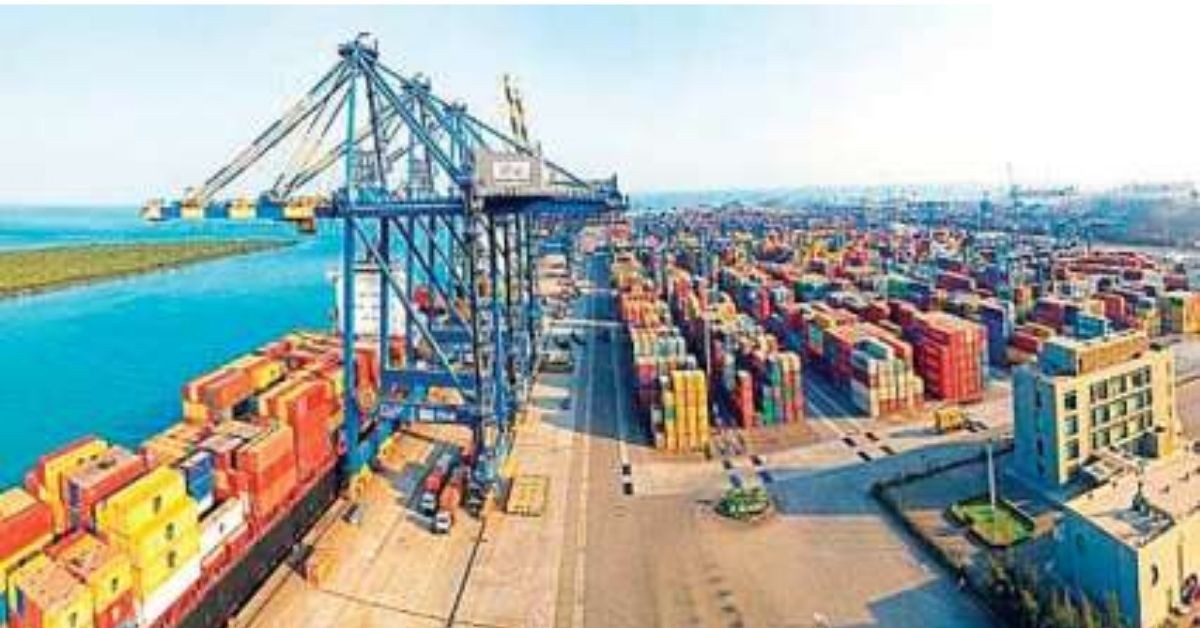Adani Ports, D P World and QTerminals file initial bids for mega container terminal at Deendayal Port in Kandla. Adani Ports and Special Economic Zone Ltd (APSEZ), Hindustan Ports Pvt Ltd – the Indian unit of Dubai’s D P World Ltd – and QTerminals L.L.C have submitted initial bids on a tender floated by State-owned Deendayal Port Authority to build a mega container terminal at Tuna-Tekra, a port official said.
The 2.19 million twenty-foot equivalent units (TEUs) capacity container terminal is estimated to cost Rs 4,243.64 crore. The deadline for submitting the qualification documents on the tender ended on Wednesday.
Deendayal Port Authority runs the country’s biggest State-owned port by volume at Kandla in Gujarat and Tuna-Tekra is a satellite facility located some 15 kms away. The turnout on the tender was lukewarm and did not meet the expectations, shipping industry sources said.
Moreover, APSEZ’s qualification will hinge on the outcome of the petition it has filed in the Supreme Court seeking to reverse its disqualification from tenders issued by State-owned major ports. APSEZ has been disqualified from recent tenders floated by major ports due to a tender condition that forbids firms involved in contract termination at other ports from participating.
A coal handling terminal run by a unit of APSEZ at Visakhapatnam Port Authority was terminated in December 2020, a few years into its 30-year contract. Having lost the race for the Jawaharlal Nehru Port Container Terminal (JNPCT) deal, where it had the maximum at stake to win the tender, D P World is expected to mount a serious bid for the Tuna-Tekra terminal, port industry sources said.
There is a good reason for this.
D P World’s two terminal contracts in Jawaharlal Nehru Port – India’s second biggest container gateway – will complete their 30-year tenures sometime in 2028.
Also, D P World’s terminal concession at Mundra port, located some 60 kms away from Deendayal port, is co-terminus with the 30-year concession awarded by the Gujarat government to Adani Ports and Special Economic Zone Ltd (APSEZ) for Mundra, which will end in February 2031.
There is no clarity or certainty on the extension of these terminal concessions, leaving D P World with limited options to retain its strong footing, built over many years, on India’s Western seaboard.
QTerminals is a terminal operating company jointly formed by Qatar Ports Management Company (Mwani Qatar – 51% shareholding) and Qatar Navigation (Milaha – 49% shareholding). It runs Hamad Port, Qatar’s gateway to world trade.
The firm’s Chief Executive Officer Neville Bissett said in a message on its website that “QTerminals are also actively pursuing opportunities in ports and terminals outside of Qatar and will establish a portfolio of overseas assets over the next 3-5 years”.
QTerminals participated in the JNPCT tender but was unsuccessful.
The planned terminal will have the capacity to cater to as much as 21,000 TEU-capacity ships. “This means the biggest of the container ships that are currently being constructed can come to Tuna-Tekra,” Deendayal Port Authority Chairman S K Mehta told ET Infra in Mumbai on 18 July.
Initially, the terminal will have a depth of 14.5 metres without tidal restrictions. There is a provision in the tender to increase the depth to 18 metres based on mutual consensus between the two parties and on cost sharing basis, he said.
The successful bidder will be free to set rates based on market conditions, another plus point for the project, unlike in the past where rates were regulated.
Deendayal Port Authority Deputy Chairman Nandeesh Shukla had pitched the terminal to private investors during a road show held in Mumbai in July, highlighting the logistical efficiency it enjoys with regard to the port’s hinterland (cargo generating areas).
“The cost of transporting any goods over land is much costlier than transporting it over water. So, the closest port will always have an edge and Deendayal Port is the closest port to the northern hinterland including NCR Delhi, UP, Punjab, Haryana,” Shukla stated.
Tuna-Tekra is shorter in distance to the inland container depots in Northern India compared to Mundra and even Jawaharlal Nehru Port.
Tuna-Tekra is 60 kms inside from Mundra, but the rail connectivity will be even lesser because the rail line runs close to Gandhidham.
“So, the rail advantage will be about 50 kms for Tuna-Tekra. In railway parlance, this means that at least one slab less, which means at least 5-7 percent of freight saving per rake. This is a huge advantage because container trade thrives on railways,” Shukla asserted.
The planned container terminal will be capable of handling three vessels at a time with a backup area of 55 hectares and more land is available if the operator wants, he added.







